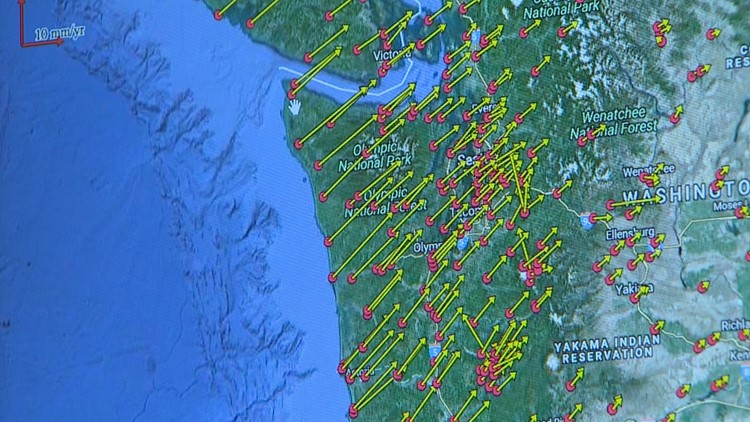The network of seismic stations keeping track of earthquakes as they happen in the northwest has a new leader.
Dr. Harold Tobin is the new director of the Pacific Northwest Seismic Network, based at the University of Washington. He is also a professor of Earth and Space Sciences. But Tobin brings something else to the table, he’s an expert on subduction.
What is subduction? It’s basically the giant fault that runs off the Washington coast capable of giving us a magnitude nine earthquake and tsunami, much like what Japan experienced in March of 2011 which killed 16,000 people.
Tobin will leave for Japan in December for two months, continuing his previous work to drill the world’s deepest hole three-and-a-half-miles down through a fault off southeastern Japan. It’s much like the fault which we have off the Washington coast, known as the Cascadia Subduction zone.
He says the research may give us something we’ve never had before, a warning before a massive and devastating earthquake hits.
”That hours to weeks before the earthquake, things were taking place,” said Tobin.
He says it’s not a prediction, but detection based on early signs that something is starting to shift.
“Creaks and groans, the strain that was taking place. So a major research goal is to understand how those faults are behaving prior to an earthquake, so that maybe someday in the future we have some tools that will show us there are precursors,” Tobin explained.
Tobin says the rocks deep under the ocean leave a record the drilling can find. The hole could also hold instruments helping flag when something’s up.
The last subduction zone earthquake off the Pacific Northwest was recorded on January 26, 1700. But that doesn’t mean nothing is currently happening.
As the Juan De Fuca ocean plate remains locked to the North American plate under the continental shelf and Olympic Peninsula, the land has been rising and moving to the northeast. That land movement is tracked by a network of Global Positioning Antennas known as PANGA, which monitors this land distortion.
Tobin says the seabed is also being distorted, we just don’t know how much. It’s a blind spot, but Japan has that kind of monitoring.
“We really don’t have that here off Washington, Oregon, and the British Columbia coast and we need it,” Tobin said.


